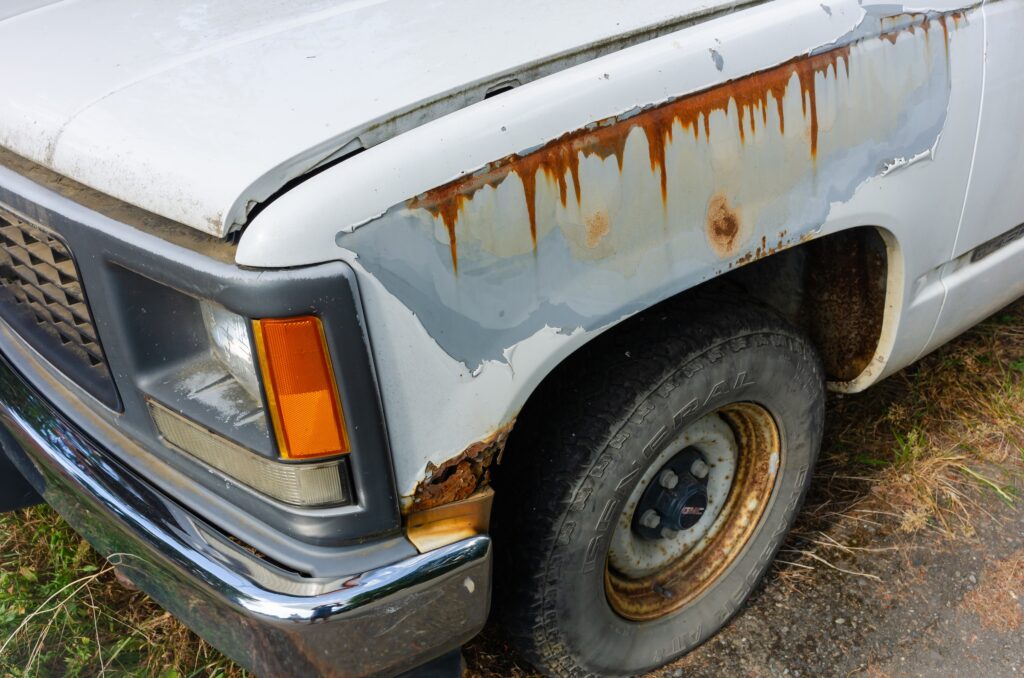Selling a damaged vehicle may seem like a daunting task, fraught with complications and uncertainties. However, with the right strategies in place, it can be a surprisingly quick and straightforward process. This guide aims to demystify the process of selling a damaged vehicle, providing a roadmap of practical tips and tricks to ensure you garner the best possible price.

Regardless of whether your car has been in an accident, suffered mechanical failure, or simply endured the wear and tear of time, understanding the market and knowing how to present your vehicle to potential buyers can turn what initially appears to be an uphill battle into a smooth and successful transaction.
So buckle up and let’s embark on the journey of turning your automotive setback into an opportunity for a fresh start.
Know Your Car’s Worth
One of the initial steps in the process of selling your damaged vehicle is understanding its value. Even in its damaged state, your vehicle still holds some worth. Various factors can influence this, including the make and model, the year of manufacture, mileage, the extent of damage, and the current market demand for your vehicle. Online valuation tools, local dealerships, or mechanics can help you estimate a fair price. Remember, having a clear understanding of your car’s worth will help you negotiate effectively and avoid underselling it.
A lot of buyers will try to take advantage of the situation and offer a far lower price than the vehicle is actually worth. It’s important to remain firm with your asking price, even if it may be slightly more than what your car is actually worth. If necessary, use local market prices as benchmarks for comparison.
Prepare Your Vehicle for Sale
Though your car may have sustained damage, there are certain steps you can take to ensure it looks and feels presentable. Cleaning the interior and exterior of your car will go a long way in making it look more attractive to potential buyers. If the damages are minor, such as small dents or scratches, consider repairing them as they may substantially increase the vehicle’s value.
The buyer will want a full report of the car’s condition, including any issues and potential problems that might arise.
A full vehicle history check may be required in some cases – this along with an accurate description of your car’s condition will add to its value, as buyers can be assured that they are getting a good deal. The more comprehensive the documentation, the higher your car’s worth will be.
Consider Yunk Yards
If you have a car that has been severely damaged, then selling it to a used car dealer or individual may be out of the question. In such cases, consider taking your vehicle to a junkyard instead. Junkyards are in the business of buying and reselling parts from junk cars. Whether you decide to look at junk yards in Jacksonville, FL, or any other area, you can make some quick cash by selling off parts from your damaged car, which would be of more value than the vehicle itself.
However, junkyards may make you an offer that is lower than the actual worth of your car’s parts. If this happens, don’t accept it immediately – do research and compare prices with other junkyards in your area to ensure you get what the parts are really worth. With a bit of patience and diligence, you can make the most out of what initially seemed to be an unsalvageable situation.
Find the Right Buyer
Once you have a good understanding of your car’s worth and have taken the appropriate steps to prepare it for sale, you can begin looking for buyers. Depending on the extent of damage and the type of vehicle, some options may be more suitable than others.

For cars that are not fit to drive, selling them via online auctions or classifieds is generally the best option.
Online buyers usually provide fast and fair offers, sometimes even higher than their actual worth.
For more lightly damaged cars, it may be worth approaching second-hand car dealerships. With a dealer, you can expect a smoother transaction as they’ll take care of the paperwork for you. Car brokers are another option – they will handle all aspects of the sale process, including gathering quotes from multiple dealers.
Negotiate
When you’ve identified a buyer and are ready to make your sale, the negotiating process begins. Before entering into any negotiations, it’s important to have an idea of what you want and need from the deal. Having a good understanding of your car’s worth will give you increased confidence in your negotiations and will help you remain firm if the buyer tries to take advantage of the situation.
When negotiating, it’s best to go in with realistic expectations. Depending on the extent of damage, a sensible offer may be slightly lower than what your car is worth – this is something that can often benefit both parties as it eliminates the middleman from the equation. Remain open to negotiation and try to arrive at a mutually agreed-upon price.
Finalizing the Sale
Once both parties have reached an agreement, you can move on to finalizing the sale. Depending on the buyer, they may come to pick up the car directly or arrange for it to be towed away. Be sure to gather all necessary paperwork before confirming the transaction – for instance, you’ll need to have the title of ownership ready as well as any relevant inspection reports.

Before handing over the keys, make sure that all paperwork has been completed and that any payments (which should be made in cash or a certified check) have been cleared. Once all these conditions are met, you can officially say goodbye to your old vehicle and welcome the new possibilities that await you.
Selling a damaged vehicle might seem daunting at first, but with the right approach and a little patience, you can turn what appears to be a setback into a profitable venture. From knowing your car’s worth and preparing your vehicle for sale to finding the right buyer and negotiating effectively, each step in the process is crucial to ensure a successful transaction. Remember, even vehicles with significant damage have value, whether that’s through the parts they can offer or as a whole to the right buyer. A few scratches or dents need not spell the end of your car’s journey. Armed with these tips, you’re now well-equipped to navigate the journey of selling your damaged vehicle.


